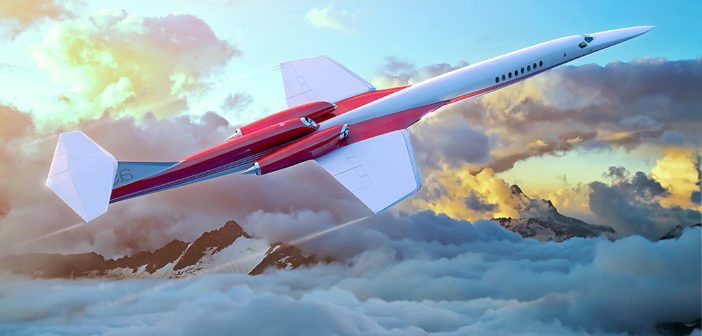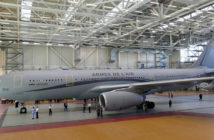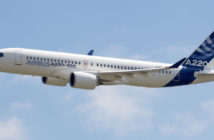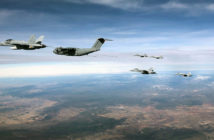By Jean-Michel Guhl
16 November 2015, Las Vegas, Nevada — With joint engineering efforts accelerating on the Aerion AS2 supersonic business jet program, Aerion and Airbus Group, Inc. today announced during the 2015 venue of the NBAA a new agreement that will expand North American-based Airbus Group, Inc. resources to the trijet AS2 program. Support from Airbus Group operations in North America will include engineering, procurement and supply chain management, logistics planning, program management, and government relations. These new resources will augment engineering support from Airbus Defence and Space (Airbus D&S) in Spain.
“The collaboration between Aerion and Airbus Group has been extremely beneficial and productive,” said Allan McArtor, Chairman and CEO of Airbus Group, Inc. “The further we proceed along the development path with Aerion, the greater our enthusiasm for this program and the deeper our commitment. Under our new agreement, our two companies are working as one to bring Aerion’s supersonic AS2 to the business jet market,” he added.
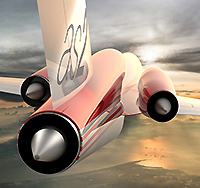
The AS2 will probably be powered by three P&W JT8D turbofans providing nearly 60,000 lb of combined thrust providing a Mach 1.7 (or 1,790 km/h) economic cruise speed and a maximum dash speed of Mach 1.8 (1,900 km/h) ©Aerion
“This undertaking is completely in line with Airbus Group’s legacy of developing innovations in flight,” said McArtor, “such as our current work on the Perlan Mission II glider – the world’s first engineless aircraft designed to reach the edge of space – which made its successful first flight recently, and the E-Fan technology demonstrator – which this summer became the first fully electric, twin-engine aircraft taking off under its own power to fly across the English Channel.” “Airbus Group has a long history of supporting innovation, and Aerion’s innovative aerodynamic technology unquestionably offers long-term benefits to the industry in terms of performance and efficiency,” said Doug Nichols, Aerion CEO.
Engineering progress report
At the one-year anniversary of the Aerion/Airbus Group collaboration, the two companies drew back the curtains on engineering efforts that have proceeded quietly, but steadily, since the first joint engineering team meeting in 2014. Airbus Defence and Space has made significant progress in the engineering of airframe structures, the AS2’s digital (fly-by-wire) flight control system, its integrated fuel system, and landing gear.
Notable accomplishments include preliminary designs for:
• A strong and light 10-spar carbon fiber wing structure;
• Fuselage and empennage structures;
• An innovative articulating main landing gear system that minimizes space requirements in the fuselage when stowed/retracted;
• A fuel system that is integrated with the digital fly-by-wire system for control of center of gravity;
• Flight control design that takes advantage of small, powerful actuators that can be housed in the AS2’s thin flying surfaces;
• A fly-by-wire system based on Airbus Group’s long experience with digital flight control technology.
To supplement the design process, Airbus D&S has built a sample titanium wing leading-edge section for evaluation and is testing composite material specimens to optimize material properties.
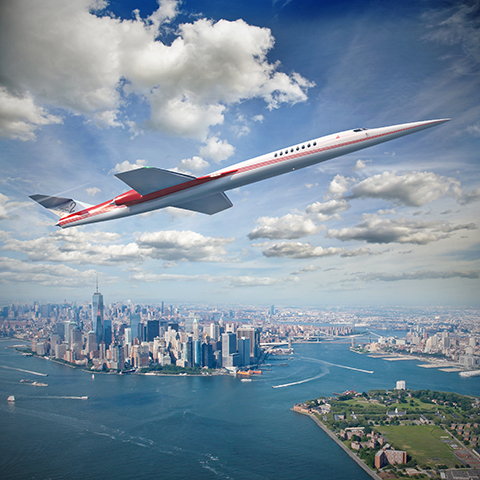
The Aerion AS2 supersonic business trijet should hopefully allow businessmen of the coming next decade to resume with fast transatlantic flights like those offered during the days of the Concorde which linked North America to Europe in a mere 3-hour long journey. ©Aerion
Aerion is the lead for other systems, such as avionics, electrical, environmental control, hydraulics, and auxiliary power. In conjunction with Airbus D&S, Aerion had made preliminary space allocations for every system with weight and balance considerations in mind. Candidate suppliers have been identified and the supplier selection process has begun. It is interesting to know that some ten years ago, Dassault Aviation had been approached by Aerion to envision a partnership, something which was considered too risky by Charles Edelstenne, then the French company’s CEO, as the market for the Aerion AS2 was not seen as promising enough.
New engineering progress
This past September, senior engineering staff from Aerion, Airbus D&S, Airbus Group, Inc., and other tier-one equipment suppliers gathered at Aerion headquarters in Reno for a four-day technical and program review, covering engineering accomplished to date on all structures and aircraft systems. “The results of this comprehensive quarterly review were nothing short of excellent,” said Ken McKenzie, Senior Vice President for Strategy and Corporate Development at Airbus Group, Inc. “We see clear and achievable technical solutions to the design of a supersonic jet, and a realistic roadmap for helping Aerion proceed toward construction and flight.” The Aerion company has stated that it expects flight testing of the AS2 to begin in 2019 and that the first aircraft will reach the market in 2021. All this seems very optimistic to the specialist’s eye!
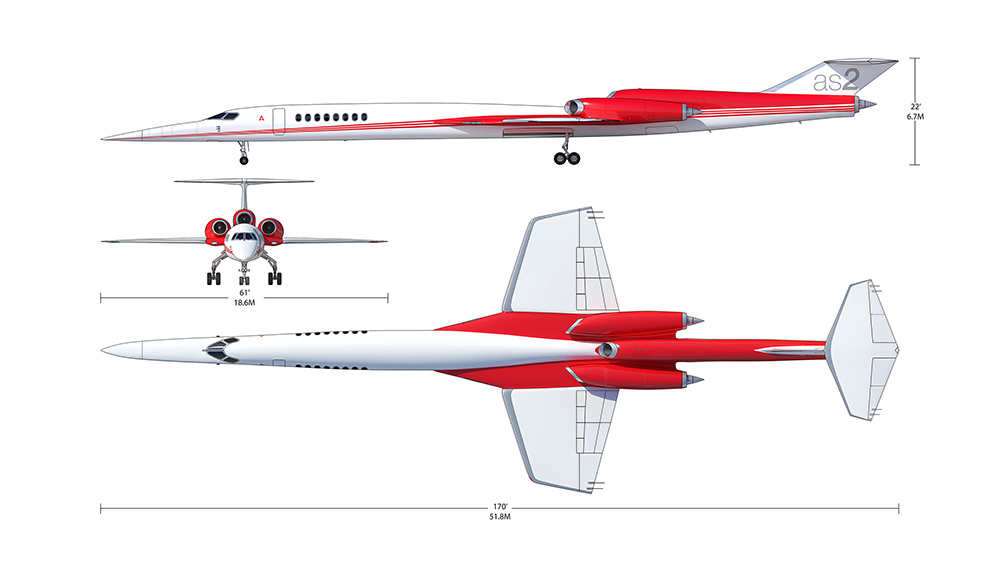
About 50m long the Aerion AS2 will be a big aircraft which silhouette should remind many of the Lockheed F-104 Starfighter from the Sixties, designed by Clarence ‘Kelly’ Johnson — including the lozenge shaped stabilizer. Catalog price of the AS2 (ex-SBJ) should be around one million US dollars. ©Aerion
“The take-away from the design review and the effort this past year,” said Aerion Senior Vice President for Aircraft Development Mike Hinderberger, “is that we have moved out of the conceptual design phase into commercializing Aerion technology. We are doing the engineering work today that will allow us to build and fly a supersonic jet at the turn of the next decade.”
Engine selection nearing
“We are targeting the first half of 2016 to select a propulsion system, which will enable us to formally launch the program shortly thereafter,” reported Nichols. Aerion is planning on a first flight of the AS2 in 2021 and entry into service in 2023, following FAA certification. EASA certification would follow closely thereafter.
Aerion has identified existing core engines suitable for adaptation to the needs of supersonic flight. “We will proceed with an engine that allows us to meet our performance goals with the minimum changes required,” said Nichols. “Aerion is focused on an engine solution that meets Stage 4 noise standards while preserving long-range supersonic performance. This is a significant challenge with a low-bypass supersonic engine, but solutions are in sight with today’s engine technology.”
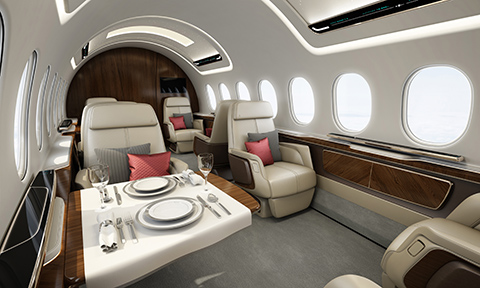
The AS2 Aerion will be fitted with a very traditional VIP interior and take advantage of current generation LED cabin lighting to provide more comfort. ©Aerion
Aerion will bring to market a supersonic jet that operates efficiently within today’s regulatory environment, including rules regarding supersonic flight over land. This takes advantage of the ability of the AS2 to operate efficiently just below the speed of sound at Mach 0.95 to 0.98, and at speeds up to Mach 1.5 over water and other areas where supersonic flight is permitted.
A win-win collaboration
In September 2014 Aerion and Airbus Group announced their technology collaboration. That relationship was conceived as a two-way street, with Airbus Group receiving exclusive access to Aerion high-speed technology as well as Aerion proprietary software for analyzing high-speed airflow and for airframe optimization. The collaboration brings a full spectrum of engineering disciplines to design, build, and certify the AS2 business jet. This latest agreement will expand that support beyond the engineering of the aircraft and into its commercialization for the business jet community.
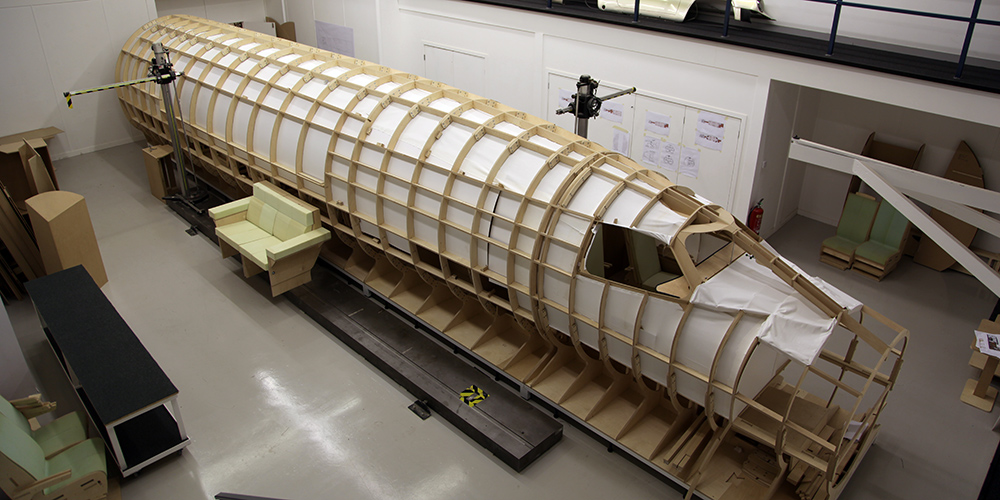
A full mock-up of the Aerion fuselage is now being constructed in Reno, Nevada. It will hold from 8 to 12 passengers depending on the requested internal configuration. ©Aerion
“This is Aerion’s jet and Aerion’s program, with substantial benefits accruing to Airbus Group,” said McKenzie. “We gain new technology and tools, and through our collaboration will be expanding engineering knowledge and refining processes such as digital manufacturing. The AS2 program will be an incubator for innovation in design, engineering, and manufacturing.” Airbus Group will provide major components and Aerion will conduct final assembly in the U.S. Both companies envision a long-term relationship for ongoing technical support.
The U.S. private company Flexjet which will be the launch customer of the new bizjet has placed a firm order valued at $2.4 billion for 20 Aerion AS2 supersonic jets, with delivery to begin in 2023. First flight is expected in 2021, as noted earlier. Flexjet CEO Kenn Ricci said the company will use the supersonic jet for overseas flights and also in China, which does not have restrictions on sonic booms. ♦

